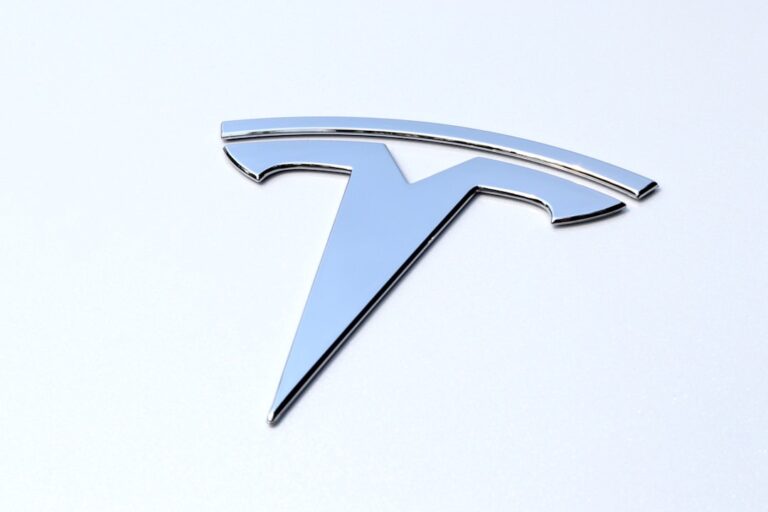
In 2021, Tesla’s stock performance was nothing short of remarkable, capturing the attention of investors and analysts alike. The electric vehicle (EV) manufacturer, led by the visionary Elon Musk, saw its shares soar to unprecedented heights, reflecting a growing confidence in the company’s future. By the end of the year, Tesla’s market capitalization had surpassed $1 trillion, making it one of the most valuable companies in the world.
This meteoric rise was fueled by a combination of strong sales figures, innovative product launches, and an expanding global footprint. The year was marked by significant milestones for Tesla, including the delivery of over 936,000 vehicles, a 87% increase from the previous year. This surge in production and sales not only solidified Tesla’s position as a leader in the EV market but also showcased its ability to scale operations effectively.
Investors were particularly encouraged by the company’s ambitious plans for expansion, including new Gigafactories in Texas and Berlin, which promised to enhance production capacity and meet the growing demand for electric vehicles.
Key Takeaways
- Tesla’s stock performance in 2021 saw significant volatility, with both highs and lows throughout the year.
- Bullish predictions for Tesla in 2022 are being driven by factors such as increasing demand for electric vehicles, expansion into new markets, and potential for technological advancements.
- Tesla’s financial performance and growth prospects are closely tied to its ability to increase production capacity, reduce costs, and maintain a competitive edge in the electric vehicle market.
- Market trends and industry outlook for electric vehicles indicate a growing shift towards sustainable transportation, presenting opportunities for Tesla’s continued growth.
- Potential risks and challenges facing Tesla in 2022 include supply chain disruptions, increased competition, and regulatory uncertainties in different markets.
Factors Driving Bullish Predictions for Tesla in 2022
Increasing Global Demand for Electric Vehicles
One of the most significant drivers was the increasing global demand for electric vehicles. With governments around the world implementing stricter emissions regulations and offering incentives for EV adoption, consumers were more inclined to consider electric options.
Tesla’s Established Brand and Technological Advancements
This shift in consumer behavior was expected to benefit Tesla immensely, as it had established itself as a trusted brand synonymous with innovation and sustainability. Additionally, Tesla’s ongoing advancements in technology played a crucial role in shaping optimistic forecasts. The company continued to invest heavily in research and development, focusing on battery technology and autonomous driving capabilities.
Enhanced Vehicle Range and Competitive Edge
The introduction of the 4680 battery cell promised to enhance vehicle range and reduce production costs, further solidifying Tesla’s competitive edge. Analysts believed that these technological advancements would not only drive sales but also improve profit margins, making Tesla an attractive investment opportunity.
Analysis of Tesla’s Financial Performance and Growth Prospects

Tesla’s financial performance in recent years has been impressive, characterized by consistent revenue growth and improving profitability. In 2021, the company reported total revenue of $53.82 billion, a staggering increase from $31.53 billion in 2020. This growth was primarily driven by increased vehicle deliveries and a growing services segment that included energy generation and storage solutions.
Furthermore, Tesla achieved its first full year of profitability, reporting a net income of $5.52 billion, which marked a significant milestone for the company. Looking ahead, Tesla’s growth prospects appeared robust. The company aimed to increase its production capacity significantly, targeting an annual production rate of 20 million vehicles by 2030.
This ambitious goal was supported by the expansion of its manufacturing facilities and the introduction of new models, such as the Cybertruck and the Tesla Semi. Analysts projected that as production ramped up and economies of scale were realized, Tesla’s profit margins would continue to improve, making it a compelling investment for those looking to capitalize on the EV revolution.
Market Trends and Industry Outlook for Electric Vehicles
| Market Trends and Industry Outlook for Electric Vehicles |
|---|
| Increasing government incentives for electric vehicle adoption |
| Rising consumer awareness about environmental impact of traditional vehicles |
| Advancements in battery technology leading to longer driving ranges |
| Expansion of charging infrastructure to support electric vehicle growth |
| Growing investment in electric vehicle research and development |
The electric vehicle market was experiencing a transformative shift in 2022, driven by several key trends that indicated a bright future for the industry. One of the most notable trends was the increasing commitment from automakers to electrify their fleets. Major automotive manufacturers announced plans to transition to electric vehicles, with many pledging to phase out internal combustion engines entirely within the next decade.
This collective movement towards electrification signaled a significant change in consumer preferences and regulatory landscapes. Moreover, advancements in charging infrastructure were expected to alleviate range anxiety among consumers, further accelerating EV adoption. Governments and private companies were investing heavily in expanding charging networks, making it more convenient for drivers to charge their vehicles.
As charging times decreased and accessibility improved, more consumers were likely to consider electric vehicles as viable alternatives to traditional gasoline-powered cars.
Potential Risks and Challenges Facing Tesla in 2022
Despite its impressive growth trajectory, Tesla faced several potential risks and challenges that could impact its performance in 2022. One significant concern was supply chain disruptions caused by global semiconductor shortages. The automotive industry as a whole was grappling with these shortages, which had led to production delays and increased costs.
If Tesla were unable to secure sufficient semiconductor supplies, it could hinder its ability to meet production targets and fulfill customer demand. Additionally, competition within the electric vehicle market was intensifying. As more automakers entered the EV space, Tesla faced pressure from both established brands and new entrants.
Companies like Ford, General Motors, and Rivian were ramping up their electric offerings, which could potentially erode Tesla’s market share. To maintain its leadership position, Tesla would need to continue innovating and differentiating itself from competitors.
Expert Opinions and Analyst Predictions for Tesla Stock

Expert opinions on Tesla’s stock varied widely as analysts weighed the company’s potential against its risks. Some analysts remained bullish on Tesla’s prospects, citing its strong brand recognition and technological advancements as key factors that would drive future growth. They believed that as the global shift towards electric vehicles continued, Tesla would be well-positioned to capture a significant share of the market.
Conversely, some analysts expressed caution regarding Tesla’s valuation. They argued that the stock was overvalued relative to traditional automotive companies and that any missteps could lead to significant declines in share price.
Impact of Government Policies and Regulations on Tesla’s Growth
Government policies and regulations played a pivotal role in shaping the landscape for electric vehicles and directly influenced Tesla’s growth trajectory. In many countries, governments were implementing incentives to encourage EV adoption, such as tax credits and rebates for consumers purchasing electric vehicles. These incentives not only made EVs more affordable but also created a favorable environment for companies like Tesla.
Furthermore, stricter emissions regulations were pushing automakers towards electrification. Governments worldwide were setting ambitious targets for reducing greenhouse gas emissions, prompting manufacturers to invest heavily in electric vehicle technology.
Key Takeaways for Investors Considering Tesla Stock in 2022
In conclusion, Tesla’s stock performance in 2021 set a strong foundation for what many anticipated would be another exciting year in 2022. The combination of increasing global demand for electric vehicles, technological advancements, and supportive government policies created an optimistic outlook for investors considering Tesla stock. However, potential risks such as supply chain disruptions and intensifying competition warranted careful consideration.
For investors looking to capitalize on the electric vehicle revolution, understanding both the opportunities and challenges facing Tesla is crucial. As the company continues to innovate and expand its operations globally, it remains a compelling option for those seeking exposure to the rapidly evolving automotive landscape. Ultimately, staying informed about market trends and expert opinions will be essential for making informed investment decisions regarding Tesla stock in 2022.
— Further Reading:
1. [Tesla Investor Relations](https://ir.tesla.com)
2. [Bloomberg – Electric Vehicle Outlook](https://www.bloomberg.com)
3.
[Reuters – Global EV Market Trends](https://www.reuters.com)
4. [Forbes – Analysis of Tesla’s Financials](https://www.forbes.com)
5. [NPR – Government Policies Impacting EV Adoption](https://www.npr.org)
In a recent podcast episode on TSLA Investors, Tesla’s performance in early 2025 is under significant scrutiny. This comes on the heels of an unprecedented slide in Tesla sales, with a 45% plummet in Europe, causing Elon Musk’s net worth to dive $5.2 billion in just one week. Analysts are now weighing in on Tesla’s problems, with one stating that Elon Musk has become one of the most hated people in the world. These developments are sure to impact Tesla stock predictions in the coming months.
FAQs
What is Tesla stock?
Tesla stock refers to the shares of Tesla, Inc., an American electric vehicle and clean energy company. Investors can buy and sell these shares on the stock market, and the price of the stock fluctuates based on various factors such as company performance, market conditions, and investor sentiment.
How is Tesla stock performing currently?
As of [current date], Tesla stock is trading at [current stock price] per share. The stock has experienced [percentage increase/decrease] in value over the past [time period], and its performance is closely watched by investors and analysts.
What are some factors that can impact Tesla stock predictions?
Several factors can impact Tesla stock predictions, including the company’s financial performance, production and delivery numbers, competition in the electric vehicle market, regulatory changes, global economic conditions, and investor sentiment towards the technology and clean energy sectors.
What are some analysts’ predictions for Tesla stock?
Analysts’ predictions for Tesla stock vary, with some forecasting continued growth based on the company’s innovative technology and expanding market share, while others caution about potential challenges such as production delays, competition, and regulatory risks. It’s important for investors to consider a range of opinions and conduct their own research before making investment decisions.
Is it a good time to invest in Tesla stock?
The decision to invest in Tesla stock should be based on individual financial goals, risk tolerance, and investment strategy. It’s important to carefully consider the potential risks and rewards of investing in any stock, and to consult with a financial advisor if needed.
